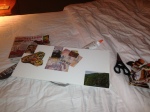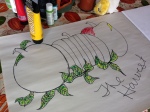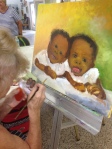I would like to say that “I’ve got music…I’ve got rhythm…” But,that is not the case. However, when I was given this assignment, to test drive a musical instrument, video the experience and then write about it, I was ready to dive into the unknown and explore this new world. I have always loved music. All kinds of music.When it comes to music, I do not discriminate. I am an avid listener, but to actually play an instrament….to try to make some beautiful sound out of something that is so complicated, it was very intimidating. intriguing, but intimidating. Playing music has always reminded me of math, and I am not very good at math, but I decided that this would be a really fun opportunity to try something new. I was not wrong. I connected with my friend Brian who is a great musician. I think the thought process went something like this………”who do I know that would have a bunch of instruments and complicated music stuff lying around that I could play with?”……Enter my friend and great musician,Brian. With my sidekick, Dr. Gayani Leonard as my videographer in tow I set off for an hour of fun and enlightenment. First, I had the opportunity to play the drums or a machine that simulated the drums. I am pretty sure that, with the exception of the “triangle”, this might be my weapon of choice if I ever decided to pursue this music thing. I like that you can bang on something and it makes a noise. You can get out your frustrations and create music all at the same time! Perfect! Next we moved on to the Sax. This is Brian’s expertise,me, not so much. Too many rules. Your bottom lip has to press on the reed just right, your fingers have to be in just the right place and then you have to learn how to breathe correctly to even make a small sound. For me it was clumsy and complicated (but it does give me great comedic relief watching the video). My final “test drive” was the guitar. How many hours have I clicked on YouTube and watched the Likes of Eddie VanHalen, Ted Nugent or Jeff Beck flexing their musical muscle. It is hard to tell where the human ends and the instrument begins when these guys play. I, on the other hand, was lucky to strum out one cord! I found it awkward placing my fingers just right on the fret board and it gave me a great appreciation for the speed and agility and talent that these legendary musicians have. All in all, I did have a great time just playing around and making some noise. I enjoyed being with friends and learning a few things, but at the end of the day, I think I will stick to painting.









